What is Neurofeedback, and How Does it Work?
Neurofeedback is a process that enables an individual to learn how to change their brain activity in order to improve their health and performance. The term “brain training” is sometimes used to refer to neurofeedback.
Clients may engage in neurofeedback in order to feel calmer, more alert, and more cognitively and physically focused. Attention deficits such as ADD and ADHD can be greatly improved.
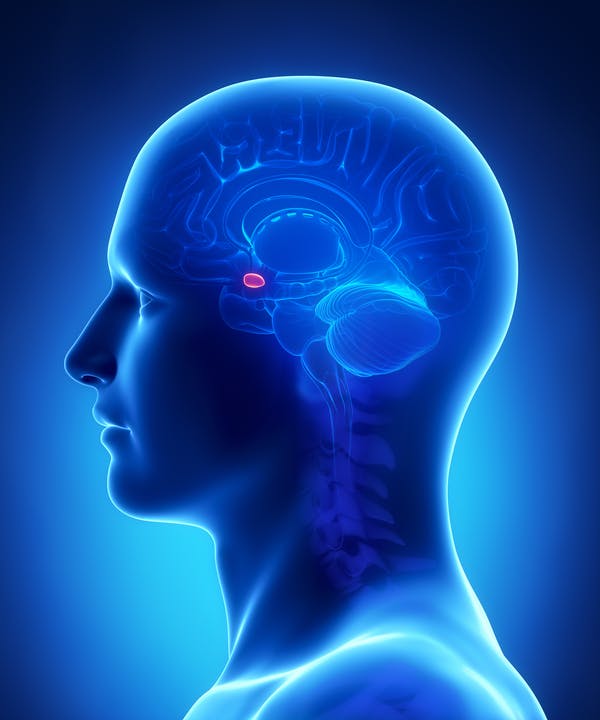
While an EEG (electroencephlagraph) is used in many different contexts, with neurofeedback EEG data is recorded in an effort to identify and overcome deficits, calm the symptoms of ailments and disease, and bring clients to a more normative and adaptive expression of themselves.
Left: An image pinpointing the location of the Amygdala, an important area responsible for regulating our fear response.
.
How Can Neurofeedback Help Me?
Neurofeedback can offer the following advantages:
1. It can allow people to lessen the use of medication
2. It places the client in control of their brain and body
3. It’s not a fixed intervention. It can be customized regularly to conform to the client’s evolving condition and needs.
Neurofeedback: Changing the Future
Brain research is a fascinating area of growth in human understanding. The field has moved quickly over the last 30 years, as the tools for this practice have developed.
Technological advances have allowed the transformation of an analog process into computer algorithm. What used to be a slow process with relatively inaccessible and uncertain data, is now becoming a faster, more detailed, and much more reliably informed practice.
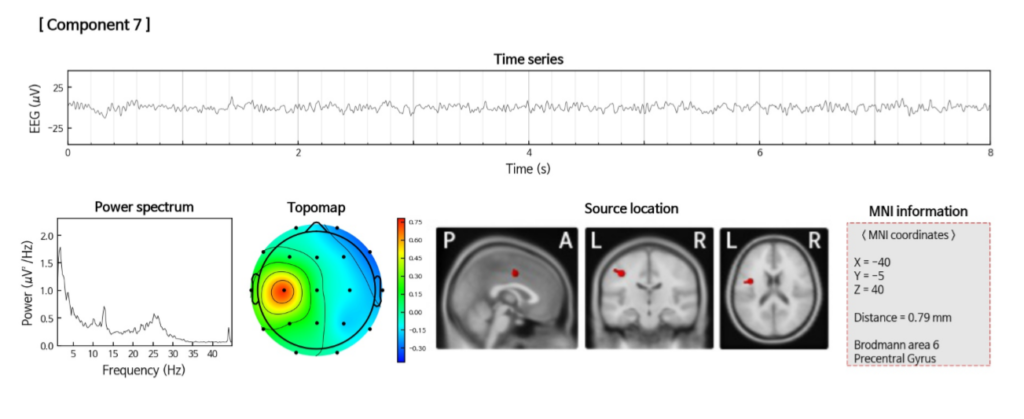
Above: example of QEEG data graphics.
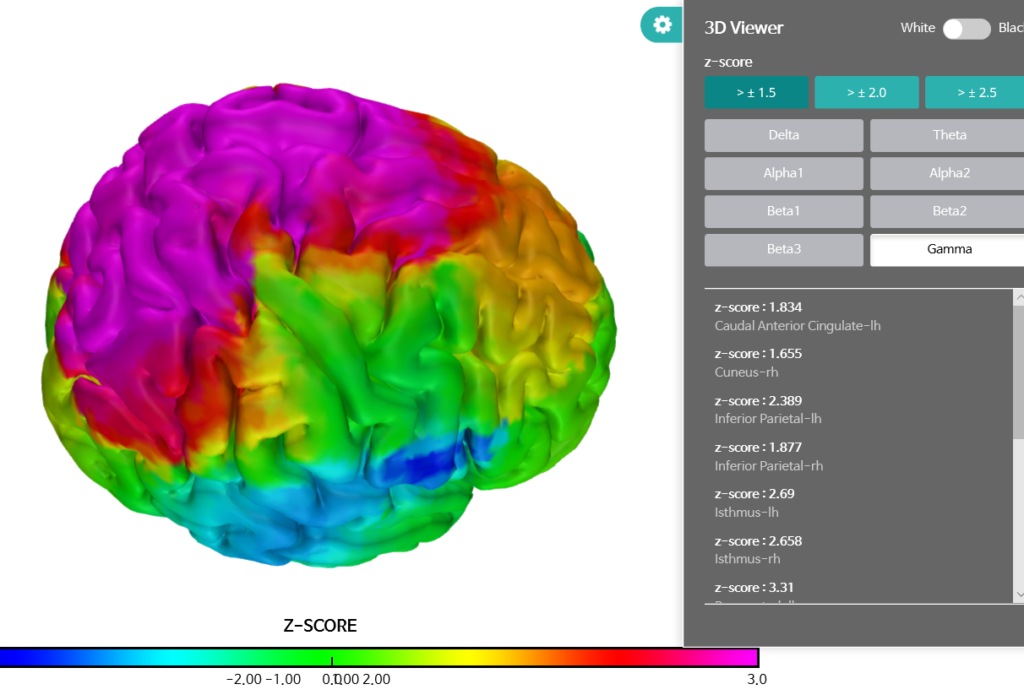
With this technology, we can take a snapshot showing how a human brain is functioning. The data from a QEEG (the analytics process that breaks down EEG information) displays this analysis, called “brain mapping,” in a variety of forms that indicate positive and negative attributes of brain functioning.
For example, High Alpha wavelengths at the crown of the head can indicate a less active awareness, or that a person is experiencing foggy thinking. At a high level, this pattern could become debilitating, even leading to aggressive medical or psychiatric intervention. At a lower level, this pattern may indicate the need to “tune up” or alter this wavelength. High Alpha is just one example of a common condition that is often helped with neurofeedback.
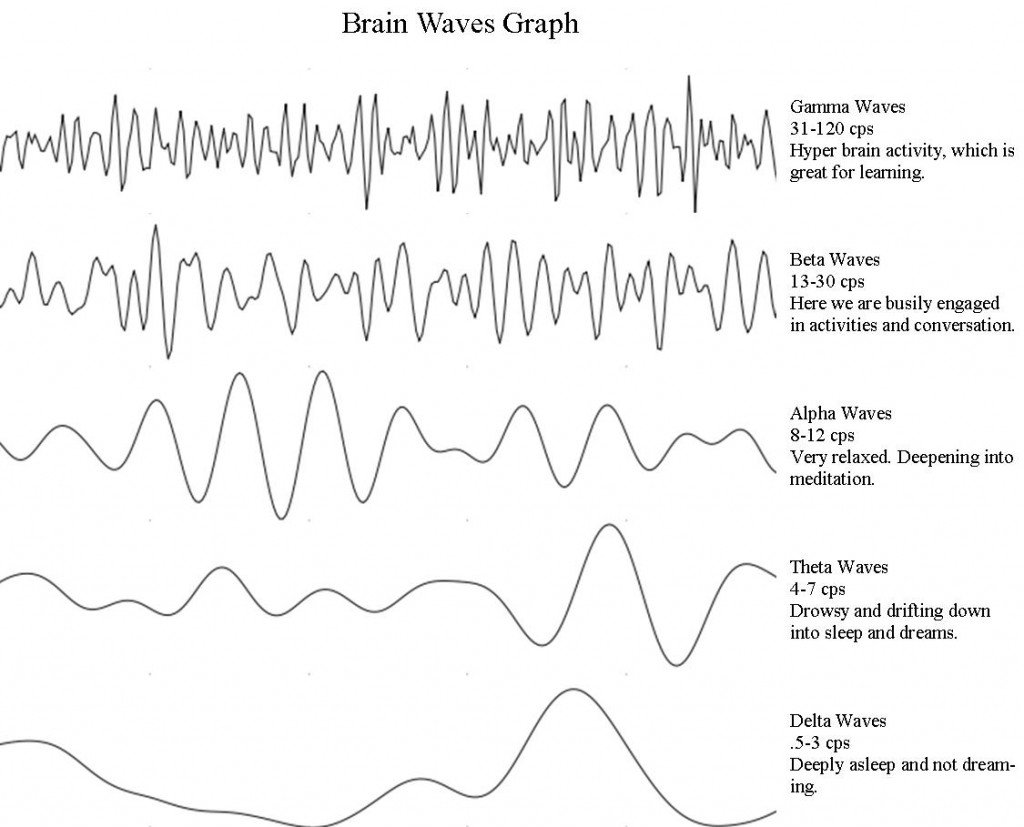
How We Take an EEG
Our brains, and indeed our entire body, communicate internally through electrical currents. An EEG (electroencephlagraph) measures electrical power, amplitude, and frequency of the electrical currents that are activated in our brain.
EEGs are measured through the scalp, using electrodes and conductive gel. Some types of EEGs use a fabric cap to hold the electrodes in place, like the one shown below. Important: the EEG recording process is non-invasive and generally comfortable for the client. Taking an EEG requires about 30 min.
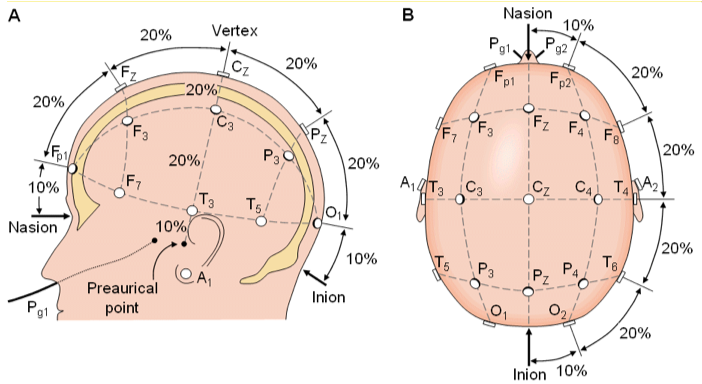

Left: a location chart for 19 electrodes used in a 10/20 EEG arrangement. Right: an electrode cap
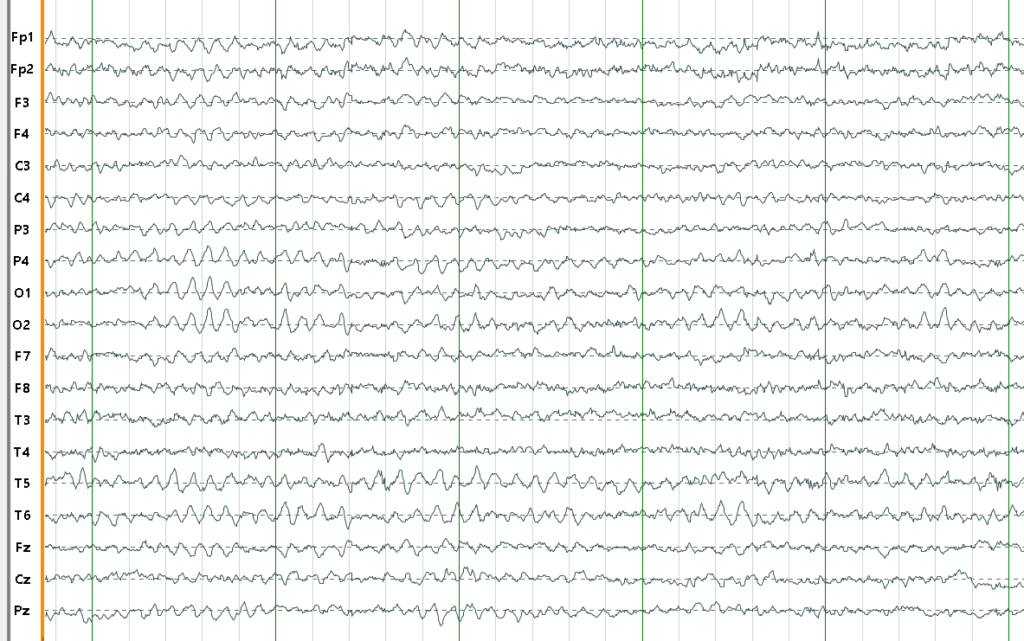
An example of EEG recording showing various brain waves.
The process for taking, processing and interpreting an EEG involves some complex computer calculations, but is overall fairly straightforward:
- Measure the current state of a client’s brain using EEG.
- Take the data from the EEG–and using a variety of computer aided calculations–generate graphs, head maps, 3D brain images, and statistical models. Neuro Pittsburgh uses MATLAB (EEGLAB), NeuroField, and iSyncBrain, which are state-of-the-art.
- These models are the Quantitative EEG (QEEG) and provide an invaluable tool for understanding brain functioning.
- Based on the QEEG, and on detailed conversations about how the client is feeling, behaving, acting, etc., determine locations within the brain that we can “train” to help that client function better.
- In some cases, it is beneficial to introduce stimulation to the brain. This uses tiny electrical currents that can “prompt” the brain into learning in a more efficient way than with neurofeedback alone. Brain stimulation is a well documented and researched methodology. At Neuro Pittsburgh, we use the protocols and experience developed by NeuroField Neurotherapy, a clinic in Santa Barbara, CA, with Dr. Nickloas Dogris and Dr. Tiff Thompson.
Neurofeedback is Just One Part of creating change.
Neurofeedback works best when it is part of an integrated approach.
Diet, exercise, your relationships, and your resources all play a role in developing focus, having better sleep, and creating a plan for more effective learning.
An individual’s commitment to creating personal change is critical to success.
Notice:
Neuropittsburgh is not a medical or psychological clinic and does not treat clinical disease.
